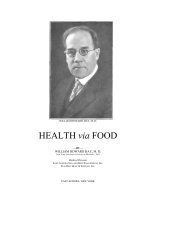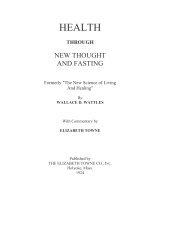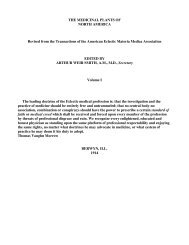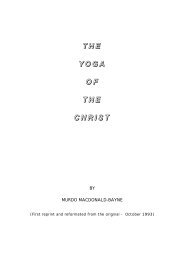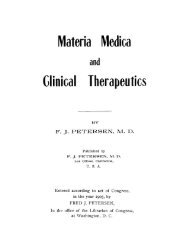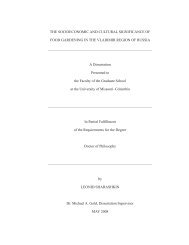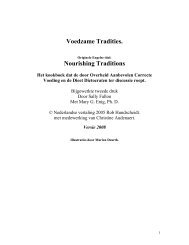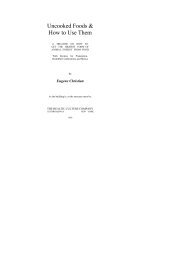FACTORS OF SOIL FORMATION - Midlands State University
FACTORS OF SOIL FORMATION - Midlands State University
FACTORS OF SOIL FORMATION - Midlands State University
Create successful ePaper yourself
Turn your PDF publications into a flip-book with our unique Google optimized e-Paper software.
indicate that, besides the variables listed, additional soil formers may<br />
have to be included in Eq. (4).<br />
In selecting cl, o, r, p, and t as the independent variables of the<br />
soil system, we do not assert that these factors never enter functional<br />
relationships among themselves. We place emphasis on the fact that<br />
the soil formers may vary independently and may be obtained in a<br />
great variety of constellations, either in nature or under experimental<br />
conditions. It is well known that various kinds of parent materials and<br />
topographies do occur in various kinds of climates and that given<br />
amounts of annual precipitations are found in association with either<br />
low or high annual temperatures, and vice versa.<br />
Soil Defined in Terms of the Fundamental Equation.—We are<br />
now in a position to establish a differentiation—arbitrary, to be sure—<br />
between soil and geological material. Soils are those portions of the<br />
solid crust of the earth the properties of which vary with soil-forming<br />
factors, as formulated by Eq. (4). As pedologists, we are interested<br />
only in those strata on the solid surface of the earth the properties of<br />
which are influenced by climate, organisms, etc. From this definition,<br />
it follows at once that the depth of soils is a function of soil-forming<br />
factors; in particular, it varies with humidity and temperature.<br />
The Solution of the Fundamental Equation of Soil-forming<br />
Factors.—Half a century ago, Hilgard had recognized the existence<br />
of the soil-forming factors and discussed them at length in his classic<br />
book on soils. Dokuchaiev (1) likewise realized the existence of soil<br />
formers. He went a step further than Hilgard and formulated an<br />
expression somewhat similar to Eq. (4). However, he did not solve it.<br />
He wrote:<br />
In the first place we have to deal here with a great complexity of<br />
conditions affecting soil; secondly, these conditions have no absolute value,<br />
and, therefore, it is very difficult to express them by means of figures; finally,<br />
we possess very few data with regard to some factors, and none whatever<br />
with regard to others. Nevertheless, we may hope that all these difficulties will<br />
be overcome with time, and then soil science will truly become a pure science.<br />
In these phrases Dokuchaiev expressed prophetic insight into one<br />
of the most fundamental problems of theoretical soil science, namely,<br />
the quantitative solution of the soil-forming-factor equation.<br />
Curiously enough, Dokuchaiev's students have paid little attention to<br />
the plea of their master for solving the function of soil-forming<br />
factors. Russian pedology and international soil science have<br />
developed in an entirely different direction and are stressing the<br />
subject of classification of soils.<br />
The fundamental equation of soil formation (4) is of little value<br />
unless it is solved. The indeterminate function f must be replaced by<br />
some specific quantitative relationship. It is the purpose of the present<br />
book to assemble known correlations between soil properties and soilforming<br />
factors and, as far as is possible, to express them as<br />
quantitative relationships or functions.<br />
Generally speaking, there are two principal methods by which a<br />
solution of Eq. (4) may be accomplished: first, in a theoretical<br />
manner, by logical deductions from certain premises, and, second,<br />
empirically by either experimentation or field observation. At the<br />
present youthful stage of soil science, only the observational<br />
method—fortified by laboratory analyses of soil samples—can be<br />
trusted, and it must be given preference over the theoretical<br />
alternative.<br />
The solutions given in this study are formalistic, as contrasted<br />
with mechanistic. In simple words, we endeavor to determine how soil<br />
properties vary with soil-forming factors. We shall exhibit but little<br />
curiosity regarding the molecular mechanism of soil formation and



